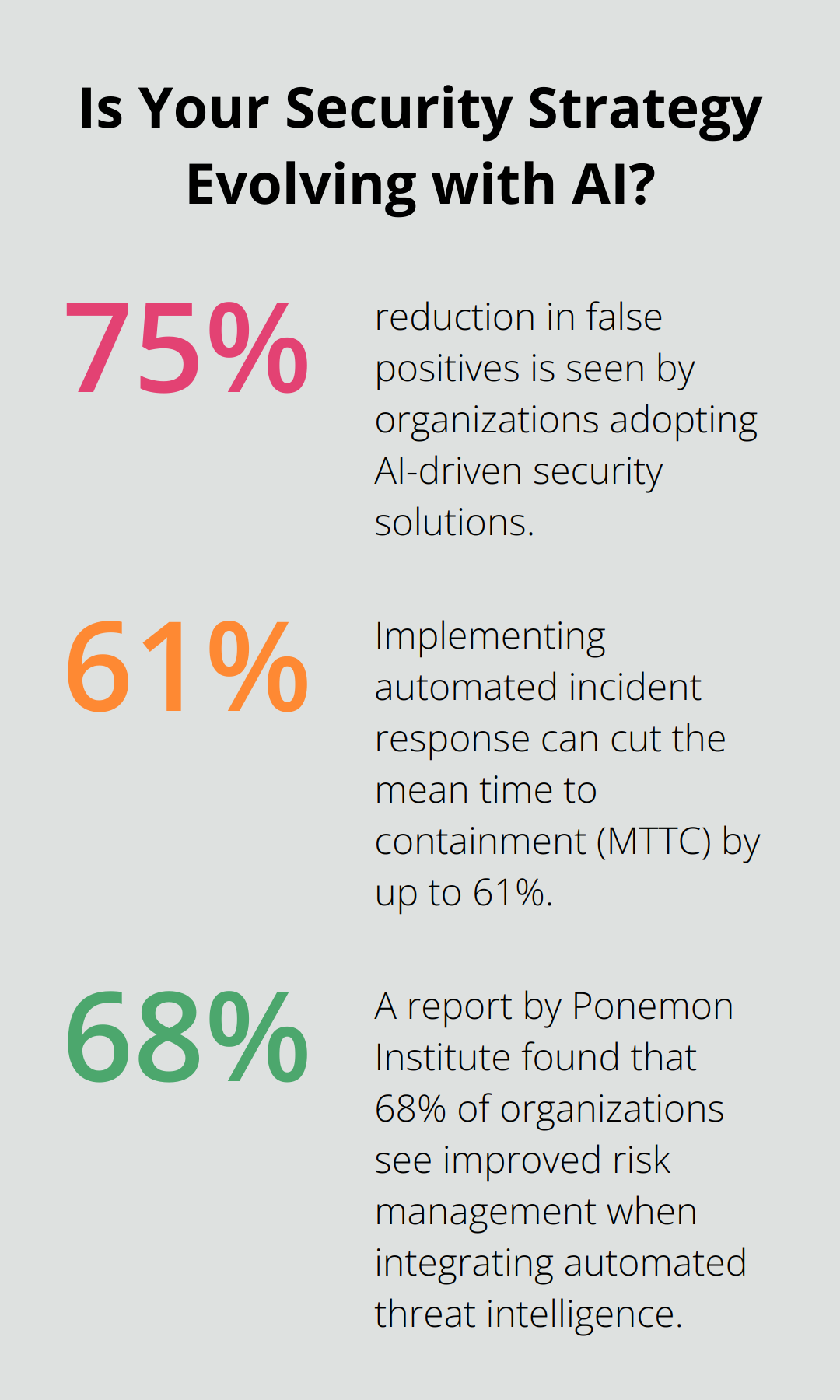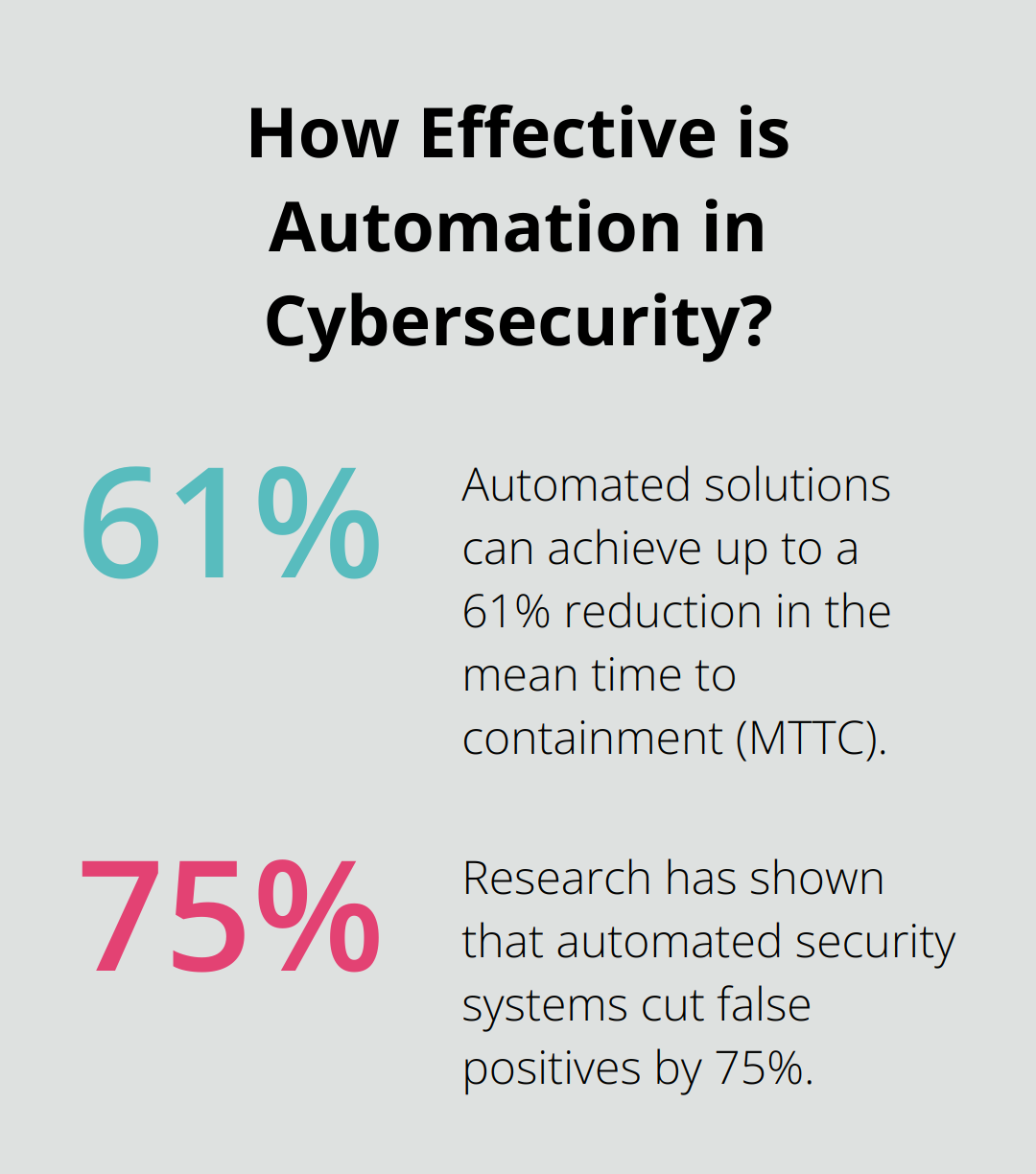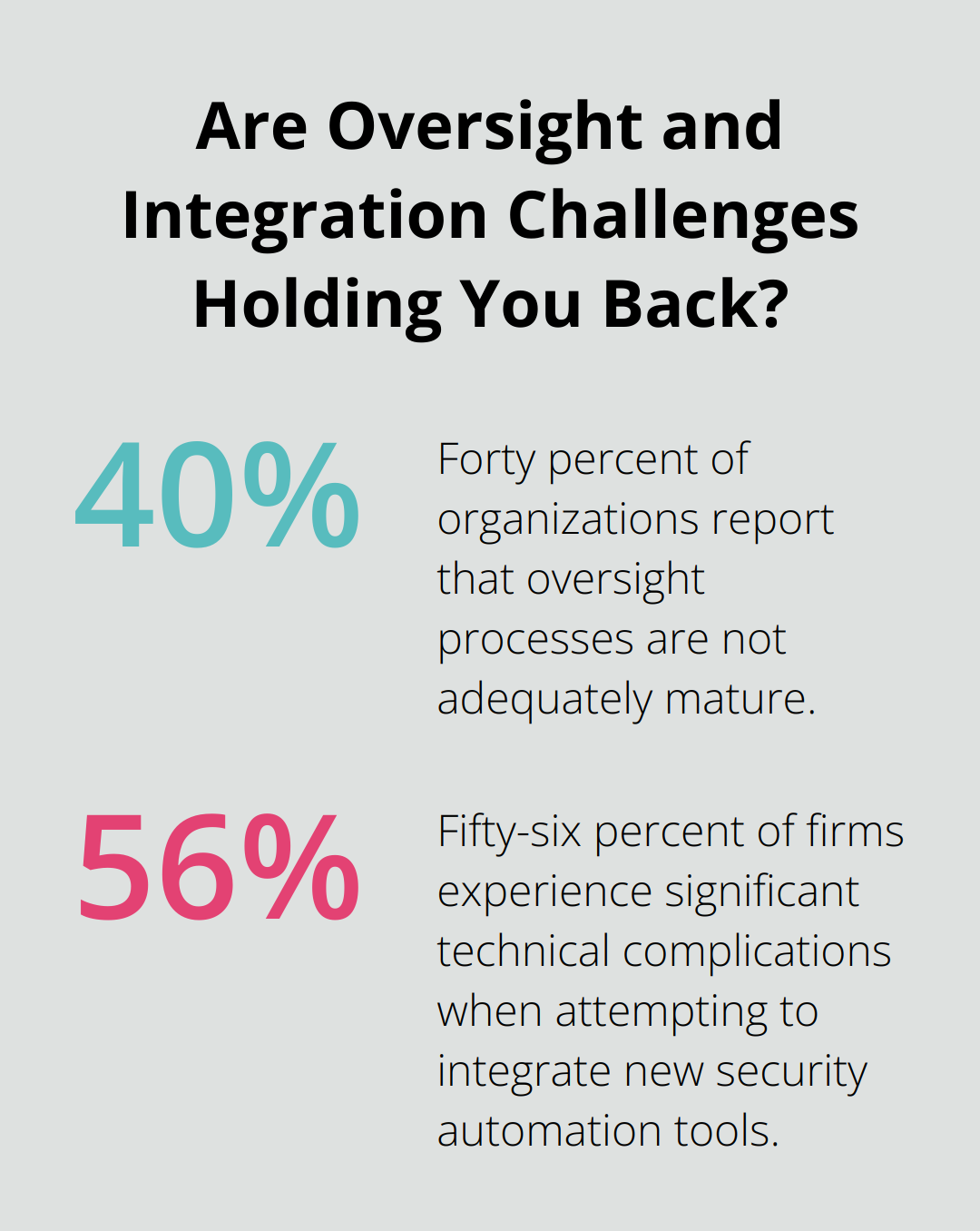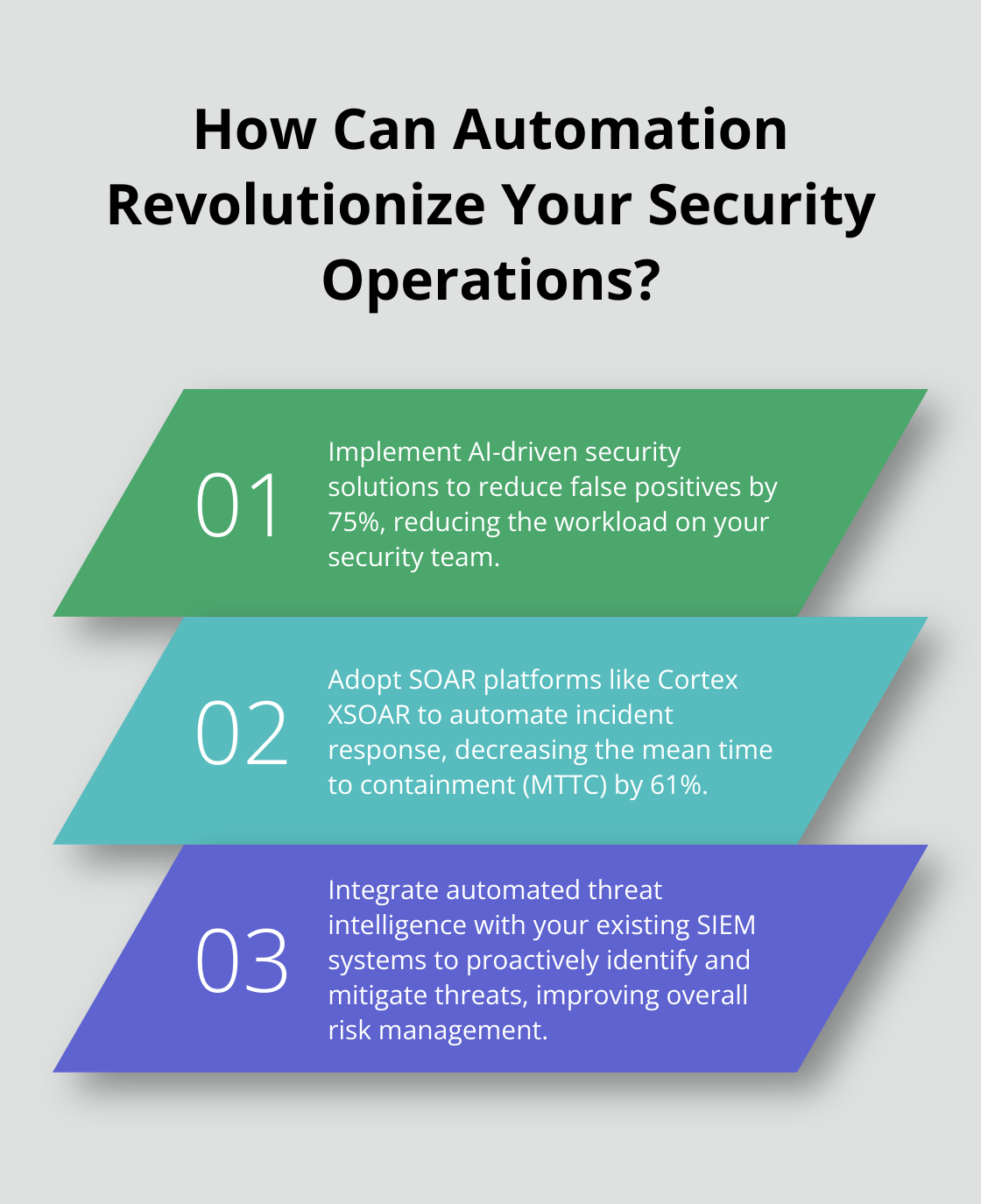Hello, you are using an old browser that's unsafe and no longer supported. Please consider updating your browser to a newer version, or downloading a modern browser.
Hello, you are using an old browser that's unsafe and no longer supported. Please consider updating your browser to a newer version, or downloading a modern browser.
Published by Mike McNelis on June 3, 2024

Security automation has become a critical focus in the cybersecurity landscape.
Emerging trends like AI integration, automated incident response, and threat intelligence automation are shaping the future of security.
Dive into these trends with us at Training Camp as we explore the benefits and challenges of security automation.
See how adopting these technologies can enhance your organization’s security posture while addressing potential hurdles.
AI and machine learning are transforming security automation. By 2025, AI in cybersecurity is projected to be a $38 billion market, according to Markets and Markets. AI algorithms rapidly analyze vast amounts of data, identify patterns, and detect anomalies more quickly than traditional methods. Organizations adopting AI-driven security solutions see a 75% reduction in false positives, which helps reduce the workload on security teams.

To implement AI successfully, focus on training models with high-quality, diverse datasets. It’s also crucial to regularly update and test these models to keep up with evolving threats. Leveraging tools like Dataiku can streamline the preparation for legislation such as the EU AI Act.
Automated incident response systems are essential for fast reaction times. According to IBM’s Cost of a Data Breach Report 2021, organizations using automated security solutions saved $3.58 million on average per breach. Implementing automated incident response can cut the mean time to containment (MTTC) by up to 61%, ensuring threats are mitigated before causing significant damage.
Adopting Security Orchestration, Automation, and Response (SOAR) platforms can enhance incident response capabilities. These tools orchestrate workflows, automate repetitive tasks, and support case management, improving overall incident response efficiency. An example of a SOAR tool is Cortex XSOAR by Palo Alto Networks, designed to streamline operations and reduce the risk of human error.
Threat intelligence automation provides real-time data on emerging threats, helping organizations stay ahead of cybercriminals. A report by Ponemon Institute found that 68% of organizations see improved risk management when integrating automated threat intelligence. By automating the collection and analysis of threat data, security teams can prioritize high-risk vulnerabilities and allocate resources more effectively.
To maximize the benefits of threat intelligence automation, integrate it with existing security information and event management (SIEM) systems. This enhances the ability to identify and mitigate threats proactively. Additionally, keeping abreast of updates in tools like Splunk can further optimize your threat intelligence efforts by providing actionable insights.
For more detailed information on security automation trends, refer to industry reports and case studies that illustrate real-world applications and outcomes.
Speed is a critical factor in cybersecurity. Automated security systems significantly reduce the time it takes to identify, respond to, and mitigate threats. According to IBM’s Cost of a Data Breach Report 2021, automated solutions can achieve up to a 61% reduction in the mean time to containment (MTTC). This quick response is vital in minimizing the potential damage and cost associated with breaches.

For practical implementation, consider using SOAR platforms like Cortex XSOAR by Palo Alto Networks. Automating repetitive tasks and orchestrating workflows allows your security team to focus on more complex issues, ensuring quicker and more effective threat mitigation.
Human error is often a weak link in cybersecurity defenses. By automating routine and repetitive tasks, you can significantly reduce the risk of mistakes. Research has shown that automated security systems cut false positives by 75%, alleviating the burden on human analysts.
Automated incident response mechanisms ensure consistent and accurate execution of security protocols. This reduction in manual intervention minimizes cognitive biases and decision fatigue, leading to more accurate threat assessments and responses.
A robust security posture is not just about preventing attacks but also about efficiently managing and responding to them. Automation enhances your overall security by providing real-time analysis and rapid responses. Organizations leveraging threat intelligence automation see improved risk management, as noted by a study from Ponemon Institute.
Integrate automated threat intelligence with your existing SIEM systems to enable proactive threat identification and mitigation. Tools like Splunk offer advanced capabilities in aggregating and analyzing security data, allowing for a more actionable approach to threat intelligence.
In summary, the adoption of security automation offers substantial benefits, including faster incident response, reduced human error, and a stronger overall security posture. Implement these technologies thoughtfully to address the challenges and reap the maximum benefits.
Achieving a harmonious balance between automated processes and human oversight is essential. Complete reliance on automation can lead to unexpected gaps, given that AI and machine learning models are not infallible. Forty percent of organizations report that oversight processes are not adequately mature, resulting in potential blind spots during security operations.

Security professionals should actively monitor and review automated decisions to ensure accuracy and reliability. Regular audits and fine-tuning of automated systems can mitigate risks and ensure the system stays aligned with organizational security policies.
Integrating new automation tools with existing security infrastructures can pose technical challenges. A survey by Ponemon Institute highlights that 56% of firms experience significant technical complications when attempting to integrate new security automation tools. These complications can lead to system downtime and potential vulnerabilities.
Successful integration requires comprehensive planning and a phased approach. Begin by identifying and mapping out key systems and workflows. Prioritize compatibility and interoperability when selecting automation tools. Engage cross-functional teams to minimize disruptions and ensure a seamless transition. Leveraging consultation services or external expertise can also aid in navigating complex integrations.
The shortage of skilled professionals in automation technology remains a major bottleneck. According to Cybersecurity Ventures, the global cybersecurity workforce gap is anticipated to reach 3.5 million unfilled positions by 2025. This skills shortage hampers the effective deployment and management of advanced security automation systems.
Upskilling current employees through targeted training programs is a practical solution. Platforms offering specialized courses, like hands-on AI training, can bridge these skill gaps. Additionally, partnering with academic institutions or leveraging certifications, such as those in AI and cybersecurity, can help develop in-house expertise.
By addressing these challenges head-on, organizations can effectively harness the power of security automation without compromising on human oversight, system compatibility, or expertise.
Security automation is transforming the cybersecurity landscape by harnessing trends like AI integration, automated incident response, and threat intelligence automation. AI offers significant advantages with its ability to rapidly analyze data and detect anomalies, leading to a 75% reduction in false positives. Automated incident response systems, particularly SOAR platforms like Cortex XSOAR, are proven to cut the mean time to containment (MTTC) by up to 61%, significantly reducing the impact of breaches. Threat intelligence automation enhances risk management, as evidenced by Ponemon Institute’s findings, helping security teams prioritize critical issues effectively.

However, the adoption of these technologies comes with challenges. Balancing automation with human oversight is essential to avoid potential blind spots. Integrating new automation tools with existing systems can present technical hurdles, with 56% of firms experiencing complications during this process. Additionally, the skills gap in automation technology is a significant bottleneck, with the global workforce gap expected to reach 3.5 million unfilled positions by 2025.
For organizations looking to harness the benefits of security automation, addressing these challenges head-on is crucial. Upskilling through targeted training programs and leveraging expertise from platforms offering specialized courses can bridge the skills gap. Engaging cross-functional teams for well-planned integration and regularly auditing automated systems can also help in overcoming these hurdles.
At Training Camp, we specialize in providing award-winning IT certification programs, including live, online, and boot camp courses with a free exam retake guarantee. Our accelerated training helps individuals pass demanding IT certification exams quickly, covering popular certifications like ISC2 CISSP, CompTIA Security+, Cisco CCNA, and more. We also offer compliance training tailored to DoD 8570/8140 regulations. Learn how our courses can help you succeed in adopting security automation by visiting our website.
Adopting security automation is not only a smart move but a necessary one in today’s evolving threat landscape. By embracing these technologies thoughtfully, organizations can enhance their security posture, improve efficiency, and stay ahead of cybercriminals.
Back to All Posts